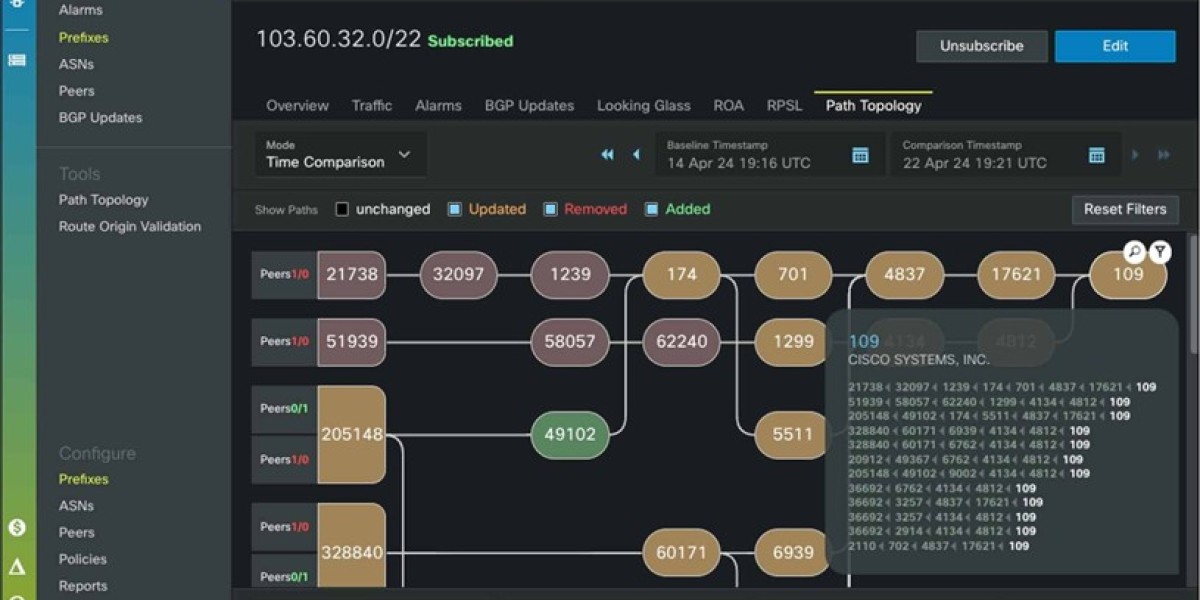The Sustainable Development Goals (SDGs) set by the United Nations define a global agenda for ending poverty, protecting the planet, and ensuring prosperity by 2030. Technological innovations like LoRaWAN-Based Solutions offer critical support for achieving these goals. This article examines how LoRaWAN Solutions contribute to sustainable development from a technical perspective, providing facts, use cases, and analysis.
What is a LoRaWAN-Based Solution?
A LoRaWAN Solution is a wireless communication system built on Long Range Wide Area Network technology. It connects battery-powered devices over large distances using low-power radio signals. The technology suits IoT applications requiring long battery life, wide geographic coverage, and low data transmission rates, making it ideal for smart cities, agriculture, and environmental monitoring.
1. Long Communication Range
LoRaWAN technology supports communication distances of up to 15 kilometers in rural settings. This extended range enables IoT devices to transmit data from remote or hard-to-reach locations without needing multiple network nodes. The long-range capability reduces infrastructure costs and simplifies deployment in widespread areas, enhancing connectivity in environments where traditional networks struggle.
2. Low Power Consumption
Devices using LoRaWAN consume very little power, allowing batteries to last for several years—often between 5 to 10 years. This energy efficiency is crucial for IoT sensors placed in locations where frequent battery replacement is impractical or costly. The low power requirement supports sustainable operation and reduces maintenance efforts.
3. Secure Data Transmission
LoRaWAN employs robust encryption methods to ensure secure communication between devices and gateways. It uses AES-128 encryption for data confidentiality, integrity, and authentication. This secure transmission protects sensitive information from unauthorized access, which is vital for applications like healthcare monitoring, smart metering, and industrial automation.
4. Scalability to Support Millions of Devices
The LoRaWAN network architecture scales efficiently to accommodate millions of connected devices within a single network. Its star-of-stars topology allows numerous end devices to communicate through gateways to a central network server. This scalability makes LoRaWAN suitable for large-scale deployments such as smart city infrastructures and nationwide sensor networks.
5. Operates on Unlicensed Frequency Bands
LoRaWAN works on unlicensed ISM frequency bands, such as 868 MHz in Europe and 915 MHz in North America. Using unlicensed spectrum reduces operational costs since businesses do not require expensive licenses to deploy networks. This feature makes LoRaWAN an affordable choice for businesses and governments aiming for widespread IoT adoption.
How LoRaWAN Supports Sustainable Development Goals
LoRaWAN technology supports multiple Sustainable Development Goals (SDGs) through its unique technical features and adaptable use cases. The low power, long-range wireless connectivity enables real-time monitoring and automation, directly addressing global challenges. Below, we examine how LoRaWAN-Based Solutions help meet key SDGs.
SDG 6: Clean Water and Sanitation
Challenge: Access to safe water is a global issue. Leakage and contamination reduce water availability and raise costs.
LoRaWAN Solution:
Water utilities deploy LoRaWAN sensors to monitor water quality, pressure, and flow remotely.
Sensors detect leaks and pipe bursts early through real-time alerts.
Remote water quality sensors measure pH, turbidity, and chlorine levels.
Automated data collection reduces the need for manual inspections and speeds up response times.
Impact: These systems reduce water loss by up to 30%, conserving water resources and minimizing waste.
SDG 7: Affordable and Clean Energy
Challenge: Expanding energy access and optimizing renewables require smart monitoring tools.
LoRaWAN Solution:
Utilities use LoRaWAN sensors to monitor solar panels, wind turbines, and energy meters.
Real-time tracking of energy production and consumption improves efficiency.
Sensors detect equipment faults early via alerts.
Manage energy storage and distribution more effectively.
Impact: LoRaWAN solutions boost energy efficiency by approximately 15% and cut operational costs through predictive maintenance.
SDG 11: Sustainable Cities and Communities
Challenge: Urban growth demands better management of traffic, waste, and safety.
LoRaWAN Solution:
Smart parking sensors reduce congestion by guiding drivers to available spots.
Waste bins with fill-level sensors optimize collection schedules and routes.
Air quality sensors monitor pollution to support public health measures.
Impact: Cities using LoRaWAN reduce traffic emissions by 20% and waste collection expenses by 25%.
SDG 12: Responsible Consumption and Production
Challenge: Efficient waste management and resource use remain critical.
LoRaWAN Solution:
Manufacturers and logistics providers track inventory and equipment with LoRaWAN sensors.
Real-time asset tracking helps minimize theft and loss.
Predictive maintenance decreases downtime and extends machinery life.
Environmental monitoring ensures compliance with waste disposal laws.
Impact: These solutions lower operational waste by up to 18%, promoting sustainability across supply chains.
SDG 13: Climate Action
Challenge: Accurate environmental monitoring is vital for climate change mitigation.
LoRaWAN Solution:
Sensors monitor temperature, humidity, and soil moisture in forests, farms, and water bodies.
Data supports forecasting of droughts, floods, and wildfires.
Enables precision agriculture that reduces water and fertilizer use.
Assists in carbon footprint monitoring and reporting.
Impact: Precision agriculture powered by LoRaWAN reduces water consumption by 25% and fertilizer use by 20%, helping lower greenhouse gas emissions.
Technical Advantages of LoRaWAN Solutions for Sustainability
LoRaWAN technology offers several technical benefits making it ideal for sustainable applications:
1. Low Power Consumption
LoRaWAN devices operate on very low power, enabling batteries to last between 5 and 10 years. This long battery life reduces the frequency of maintenance visits, cutting operational costs and minimizing environmental impact from battery disposal. Such efficiency is essential for sensors deployed in remote or hard-to-access areas.
2. Wide Area Coverage
LoRaWAN supports large-scale deployments in rural and urban settings by covering distances up to 15 kilometers with minimal gateways. This reduces the number of gateways required, lowering infrastructure costs and simplifying network design. Wide coverage makes LoRaWAN suitable for smart agriculture, city monitoring, and other expansive IoT applications.
3. Robust Security
LoRaWAN uses end-to-end encryption to protect data transmitted between sensors and servers. This security framework ensures confidentiality, integrity, and authentication of sensitive environmental and operational information. Strong encryption safeguards networks from cyber threats, which is critical for applications in utilities, healthcare, and critical infrastructure.
4. Scalable Network Architecture
The LoRaWAN network architecture supports thousands of sensors communicating through a single gateway. This scalability allows large monitoring deployments without network congestion or data loss. The star-of-stars topology enables flexible and efficient management of extensive IoT sensor networks across cities or industries.
5. Interoperability
As an open standard, LoRaWAN supports devices from multiple vendors, enabling diverse hardware to coexist on one network. This interoperability prevents vendor lock-in, giving businesses flexibility to choose best-fit devices and encouraging innovation in sensor design. It also simplifies integration and future network expansions.
Real-World Examples of LoRaWAN Solutions Supporting SDGs
Example 1: Smart Water Management in Spain
A water utility in Spain deployed a LoRaWAN-Based Solution to monitor leakage across its network. Sensors detected leaks early, reducing water loss by 28%. The system also improved billing accuracy by tracking consumption remotely.
Example 2: Solar Energy Monitoring in India
An Indian renewable energy provider implemented LoRaWAN sensors on solar farms to monitor panel efficiency and weather conditions. This led to a 12% increase in energy output due to timely maintenance and performance optimization.
Example 3: Urban Waste Management in Singapore
Singapore’s smart city program installed LoRaWAN-enabled sensors in public waste bins. The system optimized collection routes, reducing fuel consumption by 22% and lowering carbon emissions from garbage trucks.
Challenges and Considerations
1. Limited Data Rates
LoRaWAN is designed for low-data-rate applications, such as sensor readings or status updates. It cannot efficiently handle high-bandwidth tasks like video streaming or large file transfers. For such use cases, it must be combined with other communication technologies, ensuring the network meets both low- and high-data requirements.
2. Interference in Urban Areas
In densely populated cities, radio frequency interference can degrade LoRaWAN performance. Overlapping signals from various devices and networks may cause packet loss or delays. Proper network planning and frequency management become crucial to maintain reliable communication in these environments.
3. Initial Deployment Costs
Though LoRaWAN lowers ongoing operational expenses through low power use, the initial setup requires investment. Purchasing sensors, gateways, and network infrastructure involves upfront capital. Careful budget planning and phased deployment help balance cost while achieving desired coverage and scalability.
4. Planning and Integration
Maximizing the benefits of a LoRaWAN solution demands thorough planning. This includes network design tailored to geographic and application needs, spectrum allocation strategies, and seamless integration with existing IT and operational systems. Attention to these factors ensures system reliability and long-term success.
Future Prospects for LoRaWAN and Sustainable Development
1. Enhanced Data-Driven Decision-Making
As IoT adoption expands, LoRaWAN solutions will improve sustainability by providing precise environmental data. This detailed monitoring enables policymakers and businesses to make informed decisions on resource management, pollution control, and infrastructure planning, driving measurable progress toward sustainability goals.
2. Integration with AI and Cloud Computing
Combining LoRaWAN data with artificial intelligence and cloud platforms will allow advanced predictive analytics. These technologies can forecast environmental changes, optimize resource use, and automate maintenance, making sustainability efforts more proactive and efficient.
3. Expansion into New Sectors
LoRaWAN technology is set to enter sectors like wildlife conservation and disaster management. Sensors can track endangered species, monitor habitats, and provide early warnings for natural disasters. This expansion will broaden LoRaWAN’s role in protecting ecosystems and enhancing community resilience.
4. Growing Global Adoption
LoRaWAN networks now operate in over 200 countries, reflecting rapid global adoption. This widespread deployment demonstrates the technology’s scalability and relevance, positioning it as a key enabler for sustainable development worldwide.
Conclusion
LoRaWAN-Based Solutions provide effective, low-cost, and scalable technology to advance multiple Sustainable Development Goals. Their technical strengths make them suitable for water management, clean energy, smart cities, responsible production, and climate action. Although challenges remain, the ongoing innovation and adoption of LoRaWAN technology promise significant contributions toward a sustainable future.






